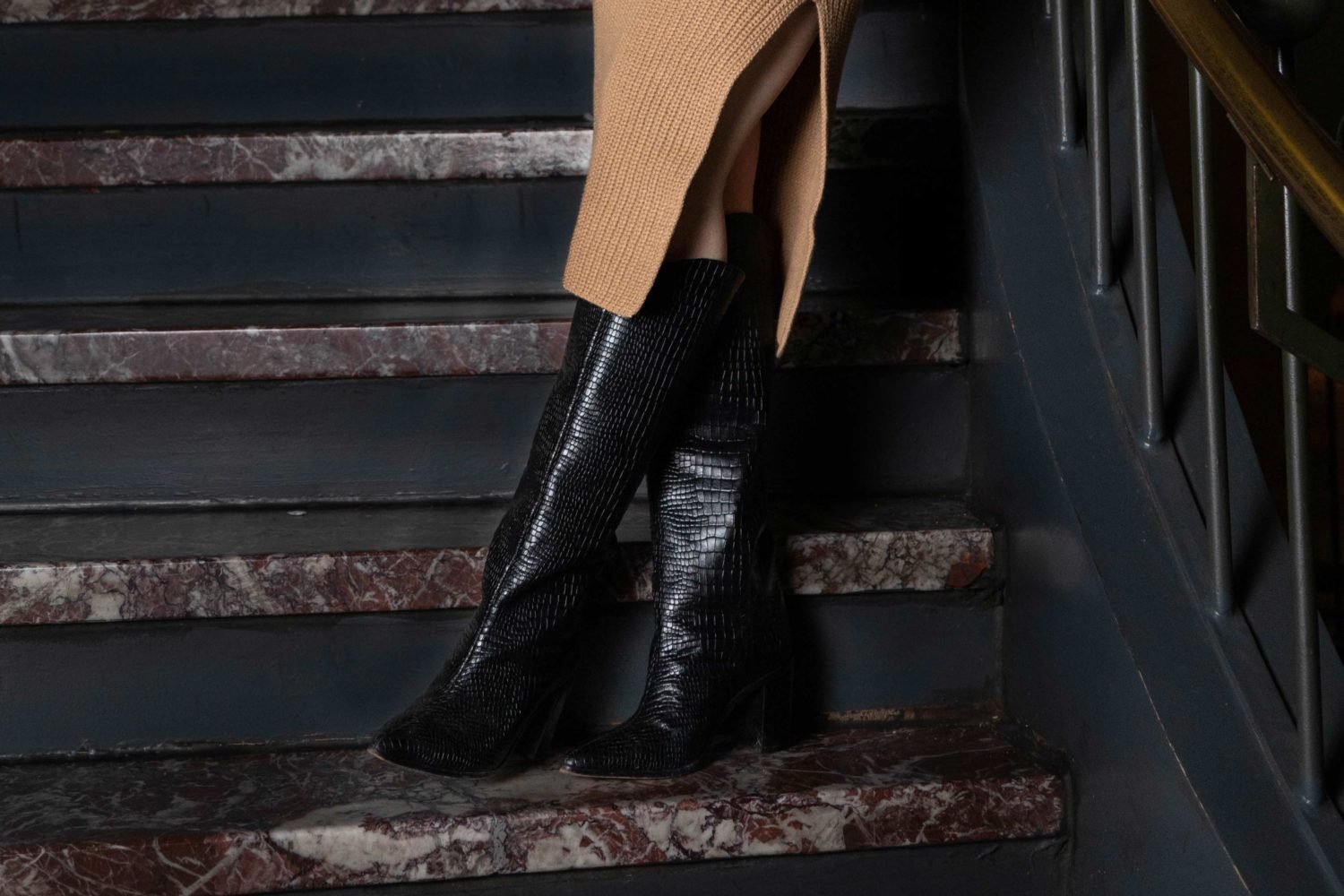We’ll call her “Lisa.” She doesn’t want to tell the world that she and her husband, “Sam,” routinely have Dr. Michael Olding, chief of plastic surgery at George Washington University Medical Center, fill in their wrinkles.
Lisa and Sam exercise seven days a week. They eat carefully; both are trim. They do all they can to keep fit. “I can take care of my body, but Dr. Olding has to take care of my face,” Lisa says.
She is 61, and Sam is 70. People usually assume they’re each a decade or more younger.
Once a year, the two visit Olding so he can inject Restylane, Juvéderm, or Perlane to hold the clock at bay. These are trade names for three popular hyaluronic-acid fillers that plump out wrinkles. Sam and Lisa have tried all three; depending on what they’re having done, the doctor may use some of one and some of another.
Other fillers include Hylaform, Hylaform Plus, Sculptra, and Radiesse. Fillers differ in thickness and chemical composition. A good doctor will offer several options and ask about allergies before choosing one or more to use; some patients report allergic reactions, most commonly redness or swelling or bruising, to one filler but not another. Fillers also vary in how long they last, and a patient’s body chemistry affects that: The same filler may keep one person’s lines concealed for six months, while another gets eight months out of a treatment.
Lisa and Sam pay $600 to $650 per syringe used, which is the way these products are billed. Filling in the nasal-labial folds, the creases that run from the corner of the nose to the corner of the mouth as the face slackens, one syringe for Lisa. Sam’s cheeks are a bit sunken, so he needs two syringes there.
“Dr. Olding doesn’t just inject it,” Lisa says. “There’s an art to it. It’s moldable; he presses it with his fingers, moves it. He says that the thicker the injectable—some are thicker than others—and the deeper you can put it, the more natural-looking it is.”
On a recent visit, Lisa wanted filler in her lips. “The top one is starting to look a little thin,” she says. Although she hasn’t minded getting filler on other parts of her face, the needle to her lips hurt much more, even with a topical anesthetic.
Still, she’ll do it again. “It’s absolutely worth it,” Lisa says.
The American Society of Plastic Surgeons reports that from 2006 to 2007 injectable fillers jumped from being the fifth-most-frequent cosmetic procedure to the second. Fillers trail only Botox in popularity.
A good many of the patients trying both injectables and Botox, which temporarily relaxes a muscle so that it can’t contract and cause a wrinkle, are under 40 and coming in at the first sign of lines on their forehead or laugh lines around their eyes. “Start with it early enough and you’ll prevent getting some of the deeper wrinkles, and you may well put off the time when you’ll need a facelift,” says Olding.
The going rate locally is $400 to $750 for both sorts of injections. With the economic downturn, some doctors have been running specials on Botox and fillers.
If you hear of a clinic or spa that offers crazy low prices on Botox every day, beware. Botox is easy to dilute. Anyone with a medical license can inject patients or let others do it under his or her supervision.
“Botox is one of those things that looks simple and is not,” says Diane Colgan, a plastic surgeon in Potomac. “You have to know the anatomy of the face, know how much to use and where to place it.”
Botox can relax little wrinkles at the outer corner of the eye by stopping the muscles that allow you to squint. But a needle put in the teensiest bit off-target can make you live with a droopy eyelid for months. Regardless of where you plan to use Botox or a filler, unless you are sure a doctor has been using these a long time, you are safest in the hands of a plastic surgeon or a dermatologist—preferably one who often injects these drugs.
Calling the drug “Botox Cosmetic” is how doctors differentiate between botulinum toxin used to stop wrinkles and the same substance used to treat an ever‑growing list of maladies, including tics, muscle spasms, migraine headaches, and most recently, overactive bladders. So many uses are being found for Botox that it may turn out to be a wonder drug like aspirin and penicillin.
The Food and Drug Administration has approved using Botox to treat furrows between the eyebrows but nothing else on the face. The FDA hasn’t approved using Botox with a wrinkle filler, although doctors do it routinely. They also use Botox on marionette lines, which run from the ends of the mouth on down, and on the fine lines at the corners of the eyes and mouth. None of this is illegal. Once a drug gets a go-ahead for one use, it’s not uncommon for it to be used “off label” for something else. The FDA didn’t approve Botox Cosmetic until 2002, more than five years after Botox was a sensation for its cosmetic uses.
Reloxin, a new type of botulinum for cosmetic injections, is in the final stage of being approved by the FDA. If the agency gives the go-ahead, Reloxin could be on the market next fall. It already has been approved for use in 23 countries, including Argentina, Brazil, and Germany. The word is that Reloxin disperses into muscles more readily than Botox Cosmetic does, resulting in a more natural look.
A warning: The off-label use of silicone as a filler is legal; there’s a new silicone product approved to treat an eye malady. Although some doctors are injecting that product to fill facial lines, the American Society of Aesthetic Plastic Surgery warns that it’s a bad idea. More than a decade ago, silicone leaking from breast implants triggered health problems, including chronic infections, in thousands of women. It also drifted to other body sites, forming bizarre lumps. While a new generation of silicone breast implants is considered safe, closed sacs are very different from having free silicone injected in your face.
There is one FDA-approved semipermanent filler, Radiance, also marketed as Radiesse. Although this filler can last a year or more, at the moment it isn’t as popular as other fillers. It’s expensive, and injecting it is said to be painful, as it must be placed deep to look natural. Some doctors hesitate to use a product with that duration: What if the patient doesn’t like the look?
When Dr. Karen Lawson, an internist in Arlington, told me that she gets Botox injections in the two frown lines between her brows, I thought she was teasing me. Her eyebrows move up and down, and all her expressions seem normal. She doesn’t have the frozen “Botox forehead” you hear about.
Avoiding a “frozen” look is a matter of experience with Botox injections and knowledge of anatomy and how facial muscles vary in size and strength, especially between the sexes, Lawson explains. If you’re concerned about a frozen look, ask the doctor before being injected how this could change your expression. Using a bit less of the drug or placing it differently can preserve more mobility. The doctor also might instruct you to move a muscle after the injection, or not move it, depending on the look you’re trying to achieve.
Lawson first got Botox injections in 1997. Nurses who worked with her had often asked, “Are you angry with me?” or told her she looked tired. “When I studied my face, which is not something I’ve tended to do a lot, I realized it had changed,” she says. The deep lines between her brows made her seem furious all the time.
Botox injected into the furrows does not make them go away entirely; Lawson is in her fifties, and the lines have been with her a while. However, the injections soften them so dramatically that she renews the Botox when it begins to wear off, usually every three to six months.
The experience persuaded her of the benefits of looking refreshed. About one-third of her patients now come in for Botox and other nonsurgical cosmetic procedures.
“It isn’t vain; it’s practical,” she says. “The person you see in the mirror is the person you project.”
I had heard that getting Botox feels like a bee sting. Lawson suggested I find out firsthand. She injected a tiny bit of the drug into my forehead—not enough to detect much of a difference but enough so that I would feel it going in. While I felt the shot, it didn’t hurt nearly as much as a bee sting. The needle used is quite small.
This article first appeared in the February 2009 issue of The Washingtonian. For more articles from that issue, click here.

















